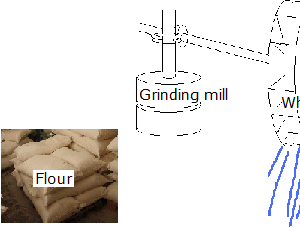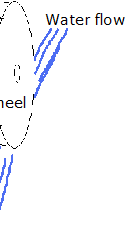The Kuriki method (the first edition in 2007) is a theory about Tourette’s syndrome (tic disorder) and obsessive-compulsive disorder to cure these diseases without medication. This theory is based on the author’s inference and interpretation regarding the structure of these diseases. Since it has been written for the psychoanalysts, reading will be difficult for people in general and it might be sometimes read erroneously. Therefore the Kuriki method must presuppose that the patient is treated by a nearby psychoanalyst, and that, between the patient and the Kuriki method, there is always the psychoanalyst. The explosion of emotional catharsis, which has strong repercussions, is done only for three seconds, once a week: beyond this rhythm, it would be an accident caused by negligence, and the psychoanalyst who is inexperienced in emotional catharsis must take responsibility for the temporary mental collapse caused by the accident. Also, to the patient who has weak capacity of logical reasoning, the psychoanalyst must explain well on the violent emotion of revenge caused by the illusory confusion between the person of the traumatic image in his head and the person in the real world.
Cure for Tourette’s syndrome (tic disorder) and OCD without medication
§15


The double structure of tic disorder can be allegorically represented by a water mill.
This water mill consists of two parts.
(a) the upper part; the rotation of the horizontal axis by the wheel.
(b) the lower part; the rotation of the vertical axis of the millstone.
The ultimate goal is the production of flour.
(a) The rotation of the horizontal axis.
Energy of the Libido appears in the sensation of a voluntary muscle. For example, for a neck tic, the energy of the Libido appears as a sensation of contraction without contraction in a voluntary muscle of the neck.
The presence of a neck muscle = The presence of a river
Energy of the Libido
The « compulsive intramuscular sensation » of tic disorder in this neck muscle = the flow of this river
Another possibility ; alternative
The presence of an eye-muscle = The presence of wind
Energy of the Libido
The « compulsive intramuscular sensation » of tic disorder in this eye-muscle = the flow of wind
The choice
A neck tic = A watermill
An eye-tic = A windmill
Rationalization
A neck tic is chosen = A watermill is chosen
A false reason (for example)
Because the joint is not well placed.
= Because the river is flowing well.
A legitimacy to pass the Super-ego (for example)
The joint makes sound. = The wheel turns well.
Compulsion-Absolute is not visible to patients. The only object of the Conscious is the disagreeable sensation of « compulsive intramuscular sensation » of tic disorder. Patients cannot see the frame of Compulsion-Absolute, which connects absolutely a movement of tic to the « compulsive intramuscular sensation » of tic disorder. The real reason of the upper layer of tic is the repression of local sensations of other places than the place of the appearance of tic. For example, the purpose of the « compulsive intramuscular sensation » of tic disorder that appears in the neck is the repression of the sensation of a body part other than the neck. For example, it can be the extremity of the urethra, glans penis, clitoris, etc.
Absolute-Compulsion
A tic movement must be done imperatively.
= The Wheel must imperatively turn.
The real reason of the upper layer (for example)
To repress the sensation of the extremity of the urethra
= To turn the horizontal axis
(b) The rotation of the vertical axis
Symptoms of neurosis are means of repression of the mass of emotion.
Why there is an upper layer?
It is to repress the mass of emotion.
= It is to turn the millstone.
The rationalization that chooses an upper layer.
An obsessive-compulsive disorder is also possible.
= A grinding mill with electric motor is also possible.
Just as water and flour are two completely different things, there is no direct relationship between the « compulsive intramuscular sensation » of tic disorder and the mass of emotion. There is no direct relationship between the manner of a movement of tic and the content of a psychological trauma.


A patient who has two manners of tic movement;
“Because I have wind and a river.”
Not because he has to make flour?
